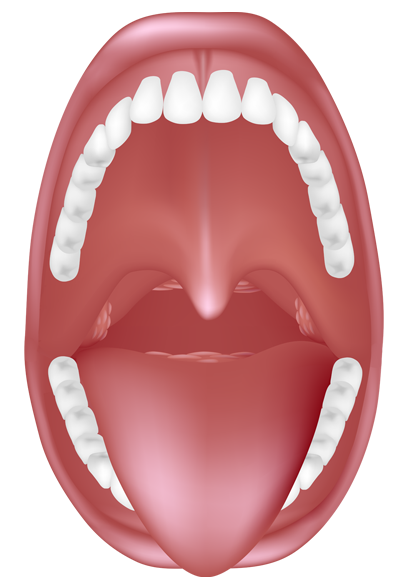Lingual Tonsil
Lingual tonsils are small rounded oval shaped masses that cover the posterior one third of tongue. These tonsils are nothing else but the clumps or aggregates of lymphoid tissues which are composed of numerous lymphoid follicles. Lingual tonsils are situated in form of pair at the base or root of tongue, one on each side.
read moreLingual Tonsil
HISTOLOGY
Lingual tonsils are covered externally by stratified squamous non keratinized epithelium. The epithelium invaginates inward to form a single crypt. Beneath the epithelium there is a layer of lymphoid nodules containing lymphocytes. These tonsils are surrounded by thin capsule of connective tissue which separates them from adjacent structures. Mucous glands located at the root of tongue are drained through several ducts into the crypt of lingual tonsils. Secretions of these mucous glands keep the crypt clean and free of any debris. Therefore, the lingual tonsils are less prone to infection.
BLOOD SUPPLY
Lingual tonsils are located on posterior aspect of tongue which is supplied through:
-
Lingual artery, branch of external carotid artery
-
Tonsillar branch of facial artery
-
Ascending pharyngeal branch of external carotid artery
NERVE SUPPLY
Lingual tonsils are innervated by tonsillar branches of glossopharyngeal nerve.
FUNCTION
Like other lymphatic tissues, the function of lingual tonsils is to prevent the infections. These tonsils contain B and T lymphocytes which get activated when harmful bacteria and viruses come in contact with tonsils. B lymphocytes kill pathogens by producing antibodies against them while T lymphocytes directly kill them by engulfing.
CLINICAL POINTS
-
Lingual tonsillitis:
Infection of lingual tonsils causes their inflammation, a condition called tonsillitis. Inflammation of these tonsils makes the swallowing very difficult and painful. The other symptoms of tonsillitis are sore throat and fever.
-
Hypertrophy of lingual tonsils:
Sometime the lingual tonsils become so enlarged that they obstruct the respiratory passage, leading to breathing difficulty. These hypertrophied tonsils are removed through tonsillectomy.
-
Lingual tonsils cancer:
Squamous cell carcinoma of lingual tonsils occurs in people above 50 years of age.
Report Error



